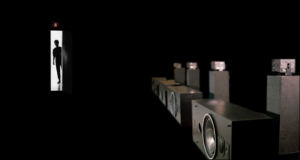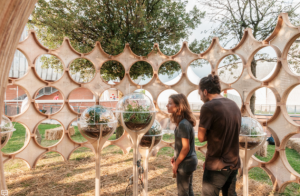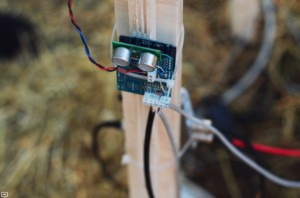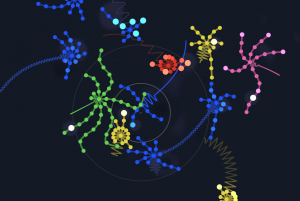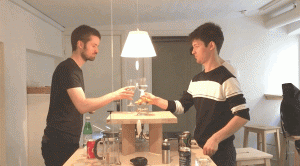sketch
var faceD = 150;
var cheekW = 35;
var cheekH = 20;
var LeftEarW = 110;
var LeftEarH = 150;
var RightEarW = 70;
var RightEarH = 100;
var R = 252;
var G = 200;
var B = 200;
var BubbleD = 40; // diameter of bubble
var x = 425; //point position of nose
var y = 130; //point position of nose
var eyeW = 10;
var eyeH = 10;
var Px = 240; //point position of line
function setup() {
createCanvas(640, 480);
angleMode(DEGREES);
}
function mousePressed() {
faceD = random(150, 170);
LeftEarW = random(100, 180);
LeftEarH = random(145, 185);
RightEarW = random(60, 140);
RightEarH = random(95, 135);
R = random(200, 255);
G = random(100, 220);
B = random(100, 220);
BubbleD = random(20, 60);
x = random(415, 475);
y = random(110, 170);
Px = random(240, 280);
eyeW = random(10, 20);
eyeH = random(10, 20);
}
function draw() {
background(255, 236, 236);
//body
noStroke()
fill(210);
beginShape();
curveVertex(200, 250);
curveVertex(220, 260);
curveVertex(175, 330);
curveVertex(165, 400);
curveVertex(300, 400);
curveVertex(330, 240);
curveVertex(350, 240);
endShape();
//body division
stroke(50, 32, 32);
strokeWeight(2);
curve(240, 300, 240, 350, 290, 330, 300, 330);
line(260, 345, Px, 400)
//right ear
push();
rotate(10);
noStroke();
fill(210);
ellipse(270, 120, RightEarW, RightEarH);
fill(252, 225, 225);
ellipse(270, 120, RightEarW/1.5, RightEarH/1.5); //inner ear
pop();
//Left ear
noStroke();
fill(210);
ellipse(220, 210, LeftEarW, LeftEarH);
fill(252, 225, 225);
ellipse(220, 210, LeftEarW/1.5, LeftEarH/1.5); //inner ear
//face
noStroke();
fill(210);
ellipse(300, 220, faceD, faceD);
//eye
fill(50, 32, 32);
ellipse(345, 220, eyeW, eyeH);
//cheek
fill(R - 20, G - 20, B - 50);
ellipse(330, 250, cheekW, cheekH);
//nose
fill(210);
beginShape();
curveVertex(350, 200);
curveVertex(355, 190);
curveVertex(375, 180);
curveVertex(x, y);
curveVertex(x - 5, y +15);
curveVertex(x - 5, y + 45);
curveVertex(400, 195);
curveVertex(390, 220);
curveVertex(365, 255);
curveVertex(365, 260);
endShape();
//bubble
fill(R, G, B);
ellipse(x + 25, y + 20, BubbleD, BubbleD); //large bubble
fill(255);
ellipse(x + 25, y + 20, BubbleD*.7, BubbleD*.7); //white part
fill(R, G, B)
ellipse(x + 22, y + 17, BubbleD*.7, BubbleD*.7); //to cut white part
}
I wanted to make an elephant whose ear size, nose length and cheek color changes. In this project I tried out the curveVertex function. It was very confusing at first but I gradually learned how it works.

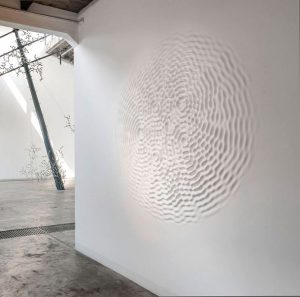

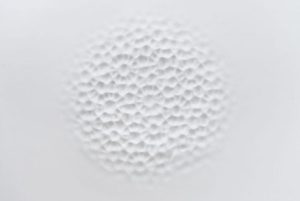
![[OLD FALL 2017] 15-104 • Introduction to Computing for Creative Practice](../../../../wp-content/uploads/2020/08/stop-banner.png)
